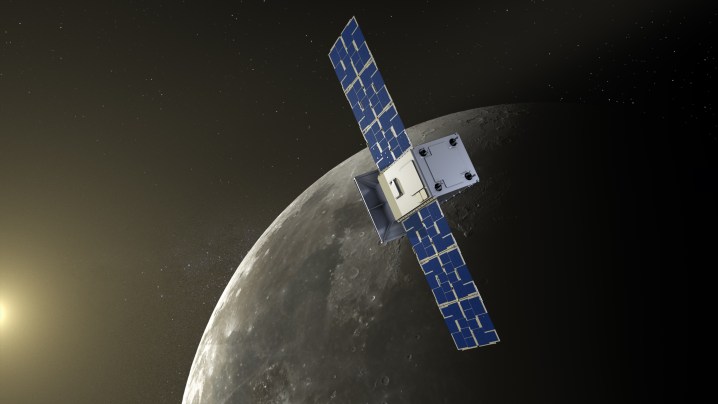
Despite some tense moments on its way to the moon, NASA has confirmed that the CAPSTONE CubeSat has successfully completed its first orbit insertion maneuver.
The achievement puts NASA another step closer to the launch of its Gateway lunar space station that will serve as a base for crewed missions, as well as a steppingstone for astronaut moon landings.
“Big news!” NASA boss Bill Nelson tweeted on Sunday. “NASA’s CAPSTONE arrived to its orbit at the moon and completed its first orbit insertion maneuver! The spacecraft will continue to refine its orbit over the next few days, and will test the orbit planned for the NASA Gateway lunar outpost.”
Big news! @NASA's #CAPSTONE arrived to its orbit at the Moon and completed its first orbit insertion maneuver!
The spacecraft will continue to refine its orbit over the next few days, and will test the orbit planned for the @NASA_Gateway lunar outpost. https://t.co/oy7Rhl2oPf
— Bill Nelson (@SenBillNelson) November 14, 2022
CAPSTONE — short for Cislunar Autonomous Positioning System Technology Operations and Navigation Experiment — will be the first satellite to test the proposed orbit for the Gateway, a facility that will play a key role in the space agency’s Artemis program.
The CAPSTONE mission operations team confirmed that the satellite fired its thrusters to put it into orbit on Sunday at 7:39 p.m. ET. The satellite is now in what is known as a near-rectilinear halo orbit (NRHO), the same that will be used by the Gateway outpost.
NASA said that over the next five days, CAPSTONE will perform two additional cleanup maneuvers to refine its orbit, after which the team will analyze the data for confirmation that CAPSTONE remains on track in the NRHO. The work will help NASA plan the deployment of Gateway in the next few years.

The positive news comes in the same week that NASA is aiming to conduct the maiden launch of its next-generation Space Launch System (SLS) rocket for a voyage to the moon as part of the Artemis I mission.
The SLS rocket will power an uncrewed Orion spacecraft toward our nearest celestial neighbor, where it’ll perform a flyby before returning to Earth. If the test mission proves successful, Artemis II will take the same route, but with a crew on board. After that, Artemis III will endeavor to put the first woman and first person of color on the lunar surface, with both astronauts using the Gateway station as a stop-off point during a historic mission that could take place as early as 2025.
Looking further ahead, NASA plans to build a base on the surface of the moon where astronauts can live and work for extended periods, with the Gateway operating as a vital link between the base and Earth.
Editors’ Recommendations


